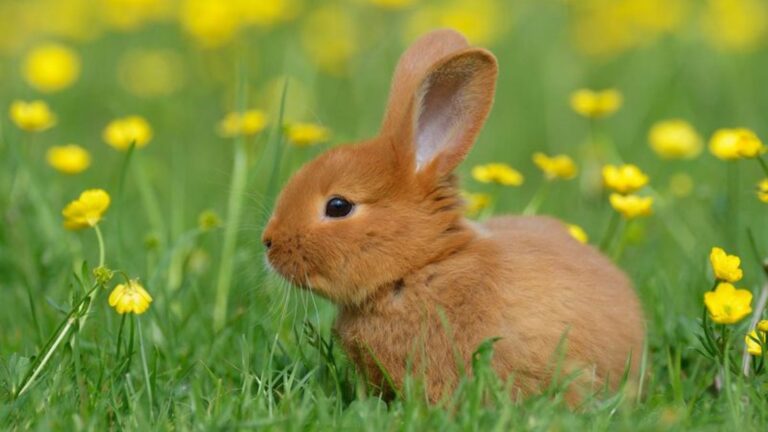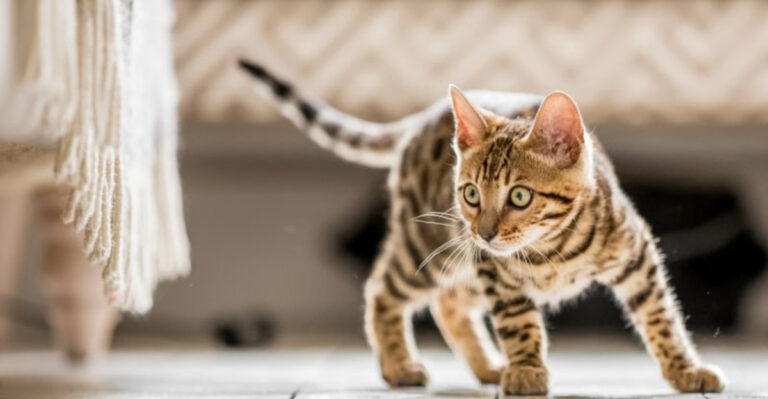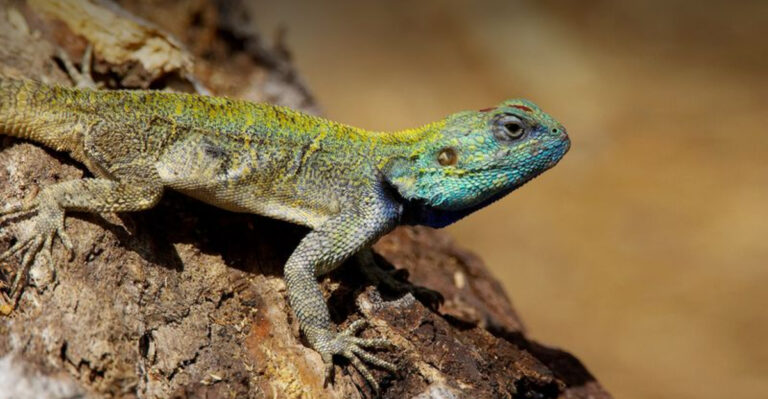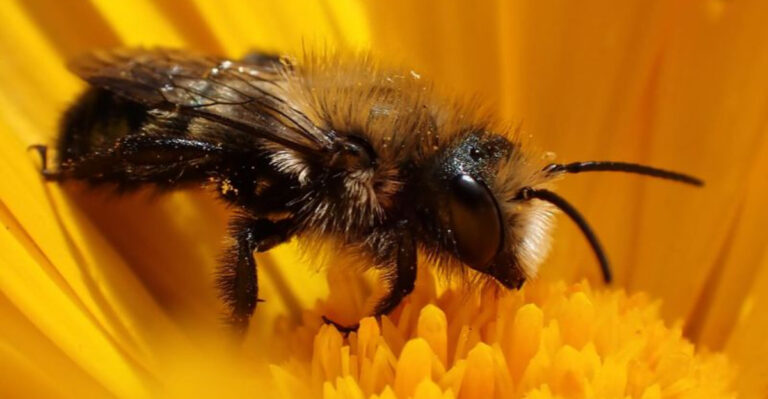15 Birds That Chirp The Loudest
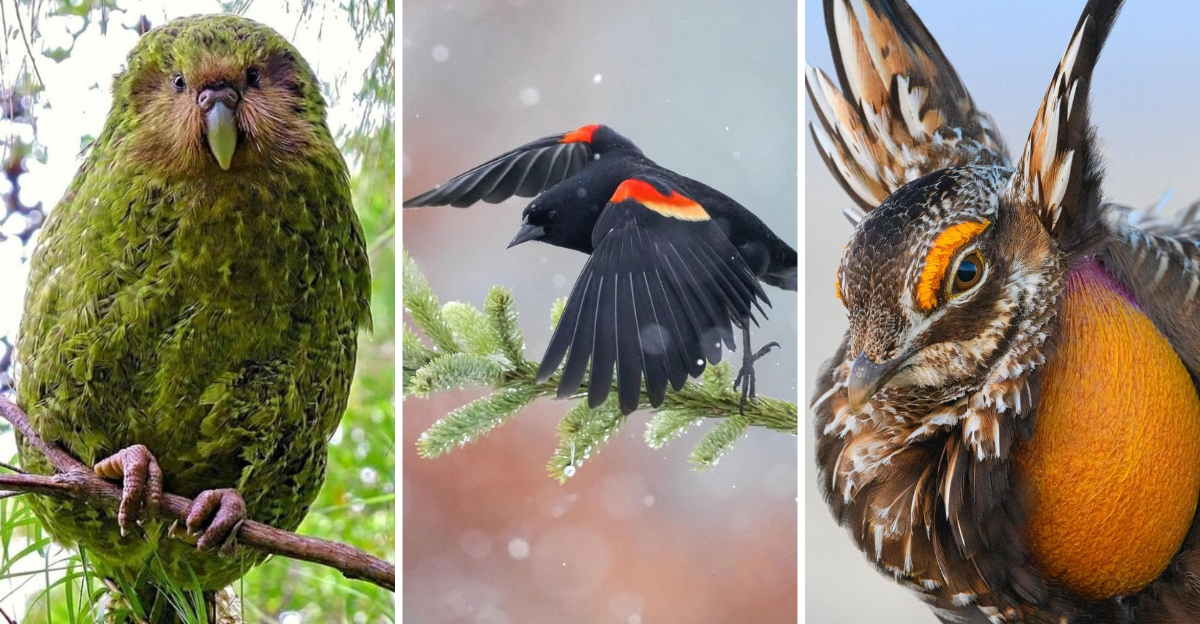
Birds are nature’s musicians, their chirps and calls filling the air with vibrant melodies. Among these feathered vocalists, some stand out for their remarkably loud chirps. This list explores avian performers whose voices are not just heard but felt.
From the jungles to the cities, these birds have made their mark with their powerful vocal abilities. Prepare to meet some of the loudest chirpers in the bird kingdom, each with its own unique flair and personality.
Let their stories and sounds inspire and entertain, as we delve into the world of the loudest chirping birds.
1. White Bellbird
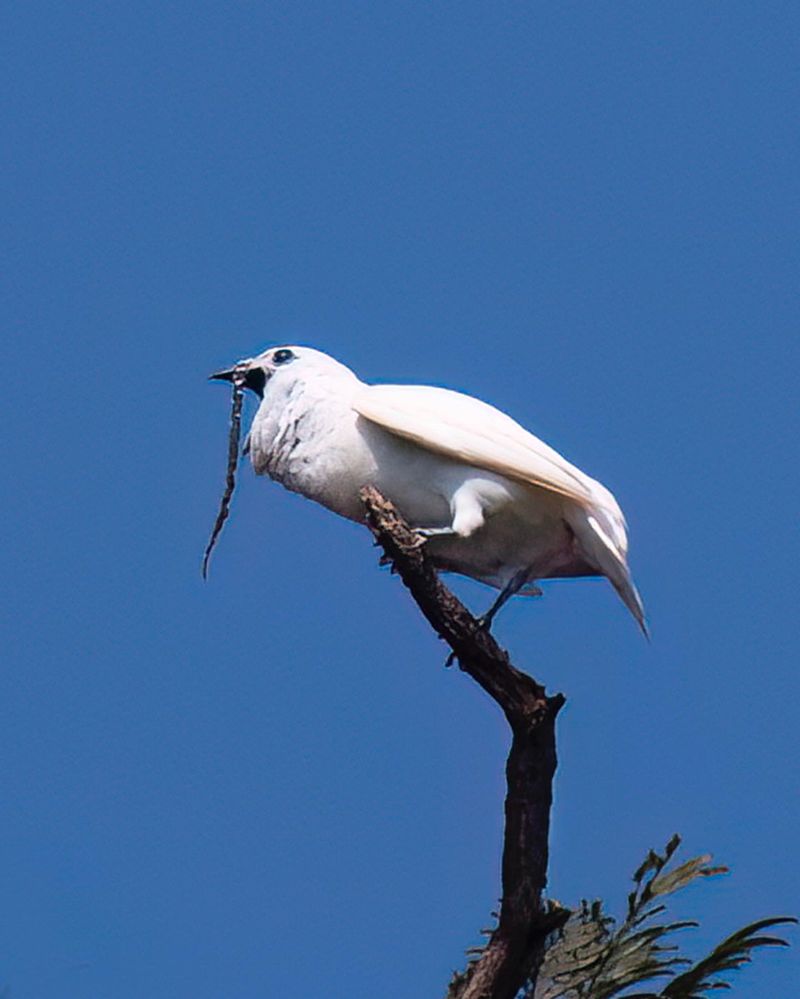
Amidst the vibrant cacophony of the rainforest, the White Bellbird’s call reigns supreme, echoing through the dense foliage like nature’s own megaphone. This bird, boasting the loudest call of any bird, unleashes its voice at a staggering decibel level, enough to rival a chainsaw.
Its impressive vocal prowess is not just a tool for attracting mates but a demonstration of its vitality and prowess. The male bellbird’s call is a defining feature, punctuating the air with a sound so intense it leaves other birds in awe.
Though its call is unmistakably loud, the White Bellbird itself is a sight to behold. With its snow-white feathers and a striking appearance, it stands out against the deep green of the rainforest. Its call, while deafening, is a testament to its role in the ecosystem, a fascinating blend of nature’s contrasts.
2. Eurasian Bittern
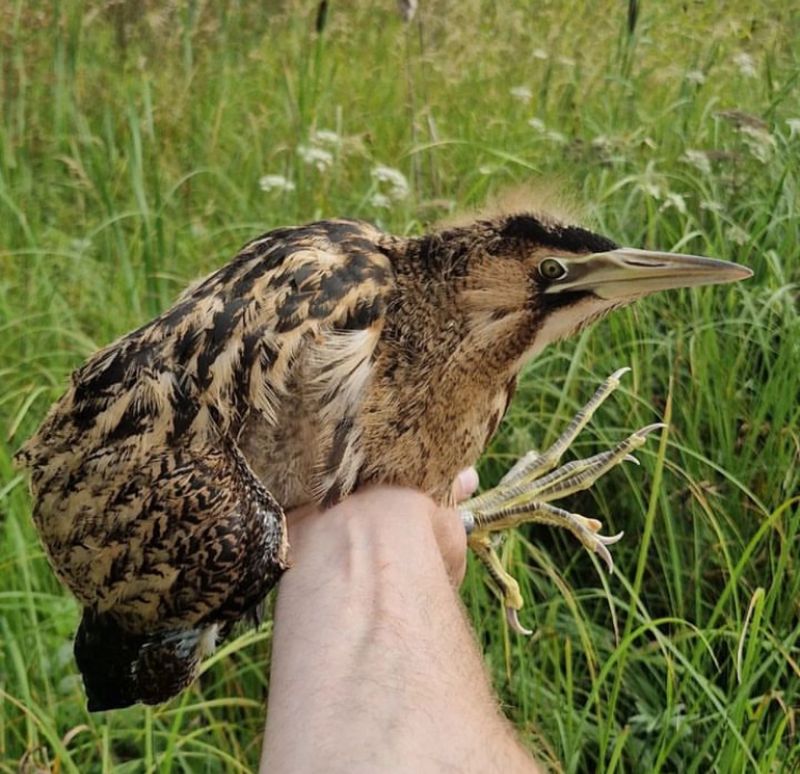
Even the quietest of wetlands can’t silence the booming call of the Eurasian Bittern. This elusive bird, with its remarkable ability to blend seamlessly into its marshy surroundings, surprises many with its resonating voice.
The bittern’s call resembles the sound of blowing into a bottle, a deep boom that travels across the water, announcing its presence with authority. Its unique vocalization is both a territorial claim and a serenade to potential mates.
Cloaked in mottled brown plumage, the bittern is a master of disguise, often seen only when it decides to break its silence. Its booming voice, however, gives it away, making it a true acoustic marvel.
Despite its reclusive nature, the sound of the Eurasian Bittern is a staple of its habitat, adding a rhythmic backdrop to the tranquil waters.
3. Kakapo
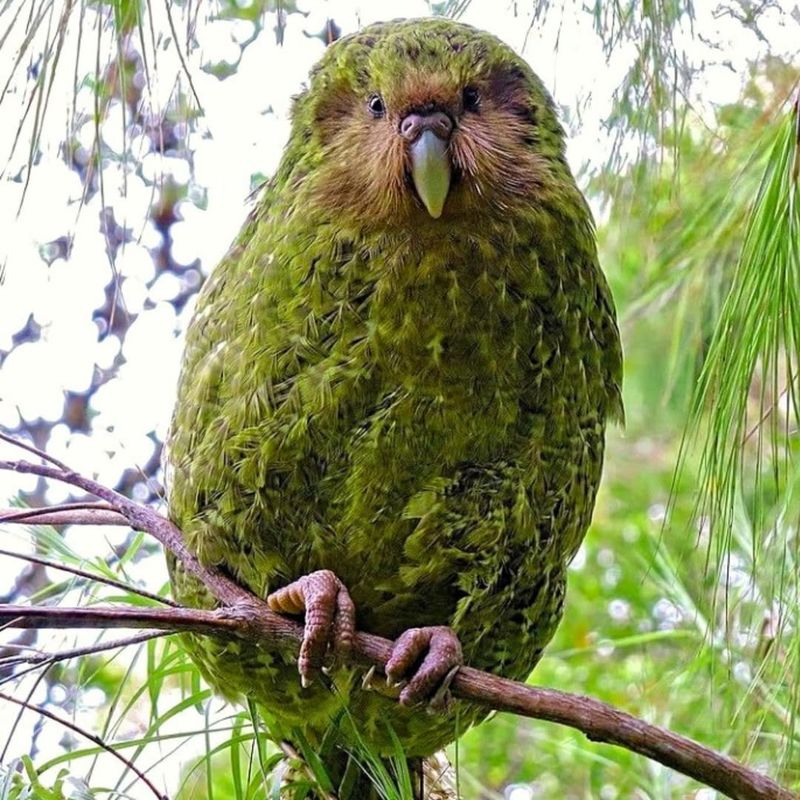
In the quiet of the New Zealand forest, the Kakapo makes its presence known with a deep, resonating boom. This flightless parrot, once on the brink of extinction, captivates not just with its unique appearance but with its extraordinary vocalizations.
The Kakapo’s booming call is a sonic spectacle, especially during the breeding season when males compete for attention. Its sound can travel several kilometers, reverberating through the trees, a testament to the bird’s tenacity and charm.
With its moss-green feathers and endearing waddles, the Kakapo is as much a visual delight as it is an auditory one. Its call is more than a mating ritual; it’s a celebration of survival and resilience. Each boom echoes the rich history and ongoing conservation efforts that ensure the Kakapo remains a living legend.
4. Superb Lyrebird
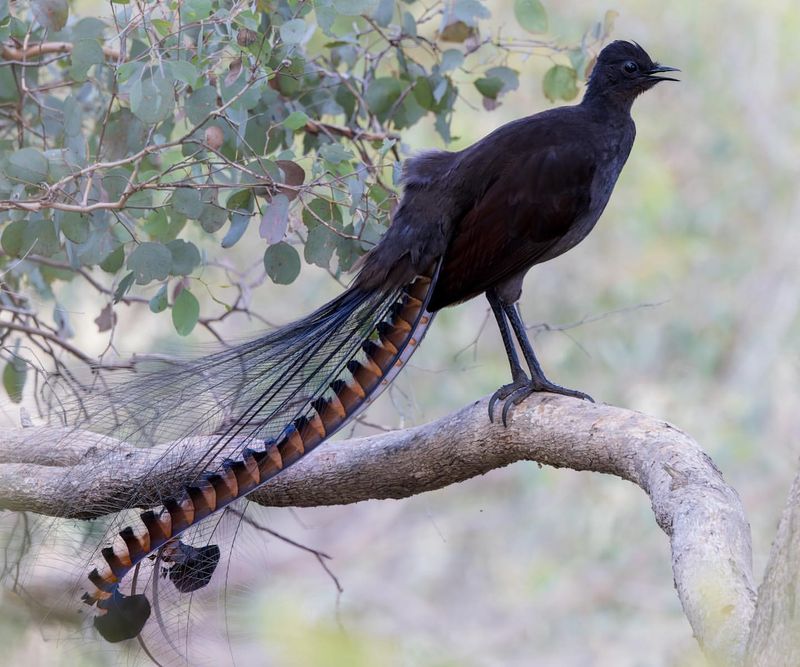
Deep within the Australian forests, the Superb Lyrebird orchestrates an auditory spectacle, its mimicry unmatched in the avian world. Known for its incredible ability to replicate a wide array of sounds, from chainsaws to camera shutters, this bird is a living sampler of forest life.
The lyrebird’s vocal repertoire is not only vast but astoundingly precise, mesmerizing any who hear it. Its performance is as much about showcasing skill as it is about communication, captivating mates and warding off rivals.
In addition to its sonic mastery, the Superb Lyrebird is a visual marvel, with its ornate tail feathers fanning out in a display as impressive as its song. It’s not just a bird; it’s an artist, creating a symphony that reflects its rich habitat.
The lyrebird’s call is both a reflection of its environment and a testament to its adaptability.
5. Eastern Whip-Poor-Will

As dusk settles over the woodlands, the Eastern Whip-poor-will begins its haunting serenade. Named for its distinctive call, which echoes like a repetitive chant, this bird’s song is both mystifying and enchanting.
The whip-poor-will’s voice is a rhythmic punctuation of the night, a sound that bridges the day to the twilight hours. Its call is a signal to other birds and a comforting presence to those who find solace in nature’s nighttime symphony.
Often heard but seldom seen, the Eastern Whip-poor-will is cloaked in mottled gray and brown, blending perfectly with its wooded habitat. Its call may be repetitive, but it paints a vibrant picture of life under the moon.
The whip-poor-will’s song is a testament to the mysteries of the night, an auditory companion to the stars.
6. Common Potoo
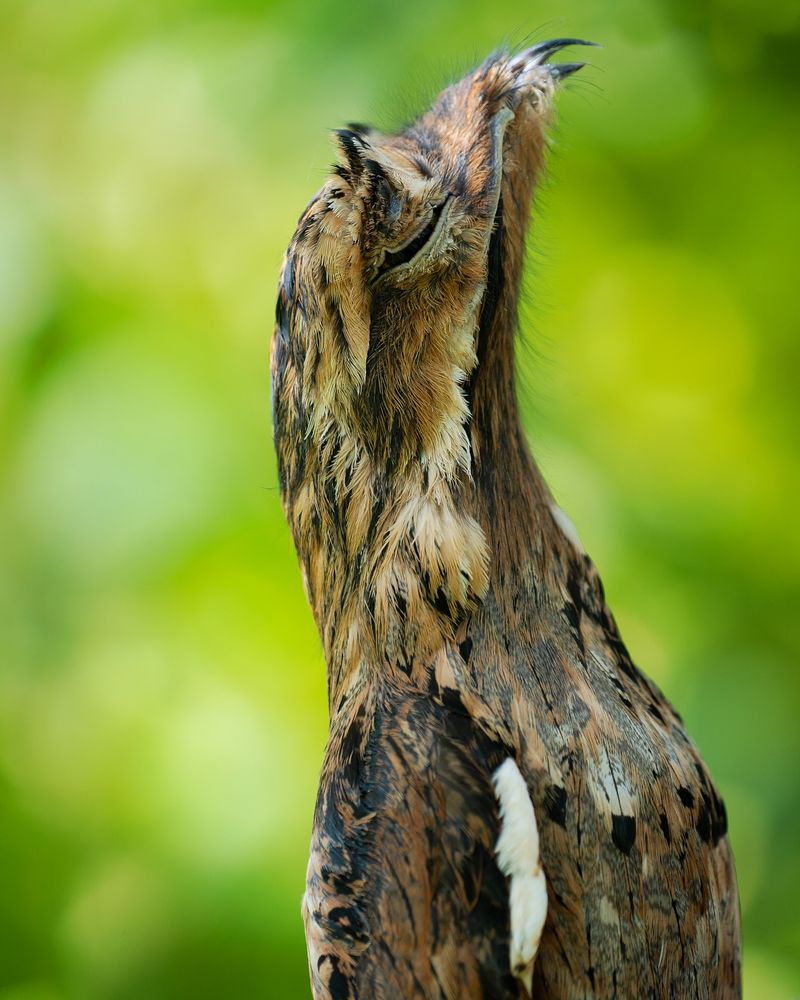
In the stillness of the tropical night, the Common Potoo’s ethereal call pierces the silence, a sound both eerie and captivating. Known for its ghostly vocalizations, this nocturnal bird is a master of camouflage.
The potoo’s call is a haunting melody that resonates through the night, its otherworldly notes casting a spell over the darkened forest. Despite rarely being seen, its voice is a familiar echo to those who venture into its realm.
With its cryptic plumage, the Common Potoo blends seamlessly into tree trunks, its eyes closed during the day to enhance its mimicry. At night, however, its haunting call betrays its presence, adding a layer of mystery to its elusive nature.
7. Laughing Kookaburra
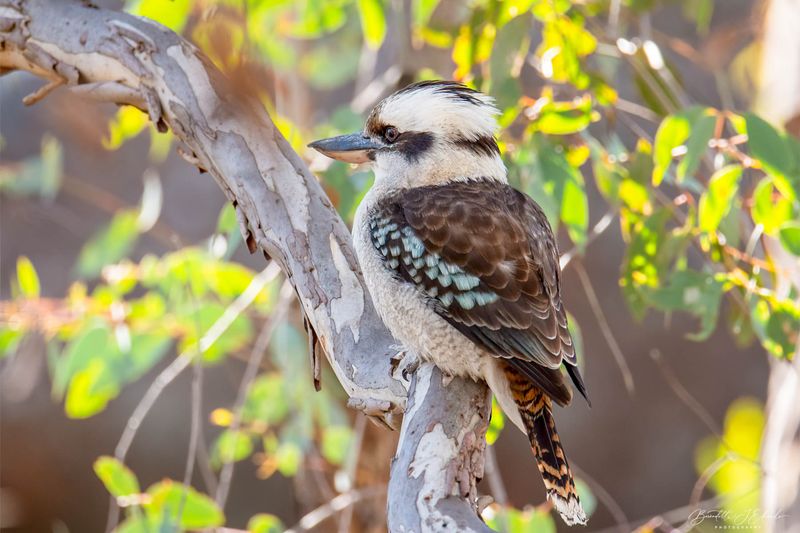
The sound of laughter is universal, and in the Australian bush, it often comes from the Laughing Kookaburra. This bird’s iconic call, reminiscent of boisterous laughter, adds a touch of humor to the forest.
The kookaburra’s laugh is a territorial call, a way to communicate with its family and neighbors. Its robust, joyful sound can be heard echoing through the trees, a symbol of the vibrant life Down Under. With its stocky build and striking blue wings, the Laughing Kookaburra is as charming to watch as it is to hear.
Its call, both a greeting and a declaration, is a staple of the Australian soundscape. The kookaburra’s laughter is more than just noise; it’s a celebration of community and the lively energy of its environment.
8. Eastern Screech Owl
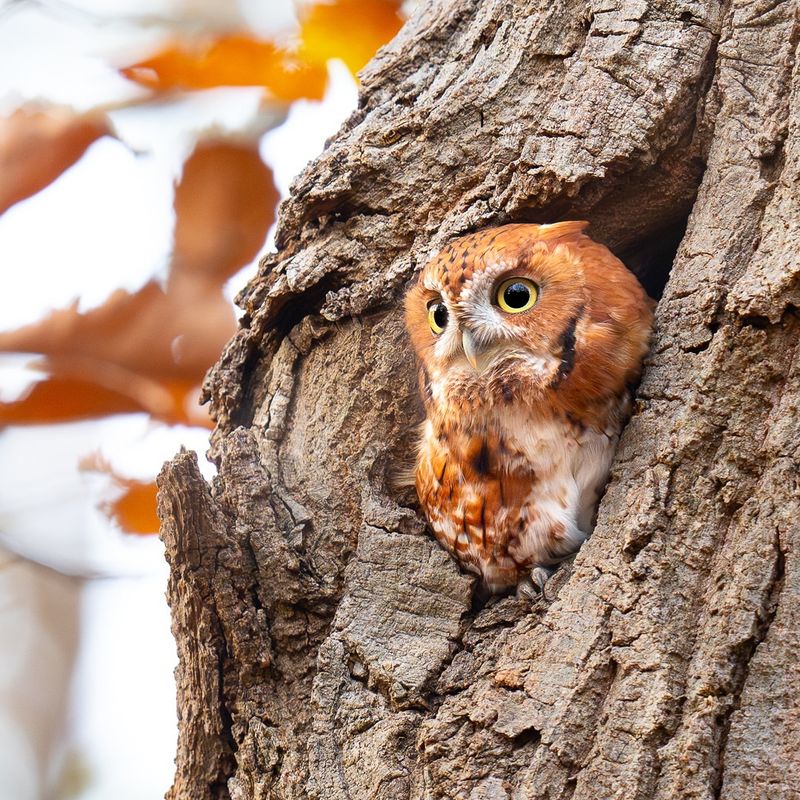
In the still of the night, the Eastern Screech Owl’s trill echoes through the darkness, a sound that sends shivers down the spine. Despite its small size, this owl’s vocalization is both chilling and mesmerizing. The screech owl’s call is a soft, tremulous trill, part of the nocturnal symphony that defines its habitat.
It’s a call for communication, a complex pattern of sounds that signals both courtship and territorial claims. With its compact body and iconic ear tufts, the Eastern Screech Owl is a master of stealth, often heard long before it’s seen.
Its eerie call, however, is unmistakable, a hallmark of the night’s mysteries. The owl’s vocalization is a reminder of the unseen wonders that thrive under the cover of darkness.
9. Northern Mockingbird
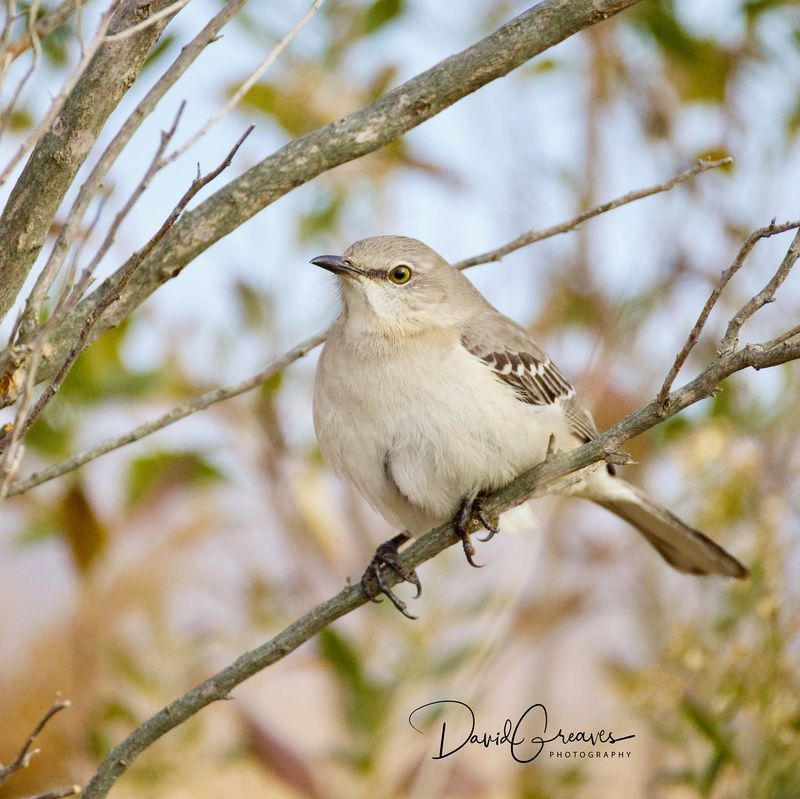
In suburban gardens across North America, the Northern Mockingbird conducts an ever-changing symphony, its song a compilation of varied tunes. Known for its mimicry, this bird’s vocal repertoire includes the calls of other birds and even mechanical noises.
The mockingbird’s song is a testament to its adaptability and intelligence, a continuous stream of creativity that enchants any listener. Its ability to mimic is both a defense mechanism and a tool for forging identity, a way to stand out in a crowded soundscape.
With its gray feathers and white wing patches, the Northern Mockingbird is a common sight, often seen singing from high perches. Its medley of songs is a celebration of diversity, a reminder of the complex world of sounds in which it thrives.
10. Song Thrush
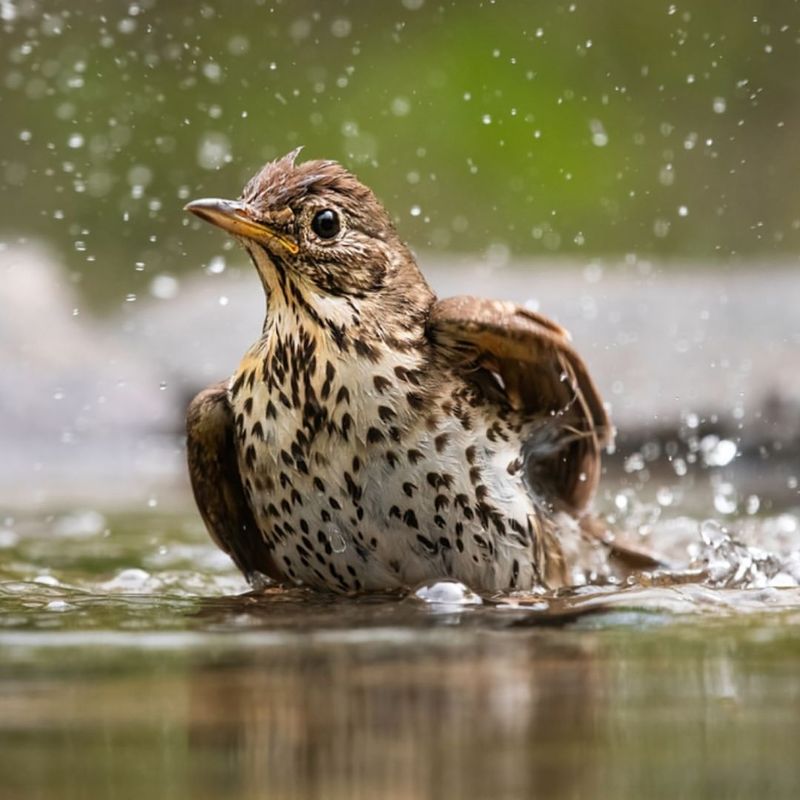
Among the blossoms and branches, the Song Thrush delivers its beautiful performance, a melody that is both repetitive and enchanting. This bird’s song is a series of repeated phrases, each delivered with clarity and purpose.
The thrush’s voice is a staple of its environment, a sound that heralds the arrival of spring and the continuation of life’s cycles. Its song is a powerful communication tool, used to claim territory and attract mates.
With speckled brown plumage and keen eyes, the Song Thrush is a delightful presence, often seen and heard in gardens and woodlands. Its repetitive song, while simple, is profoundly moving, a testament to the beauty found in nature’s persistence.
11. Western Meadowlark
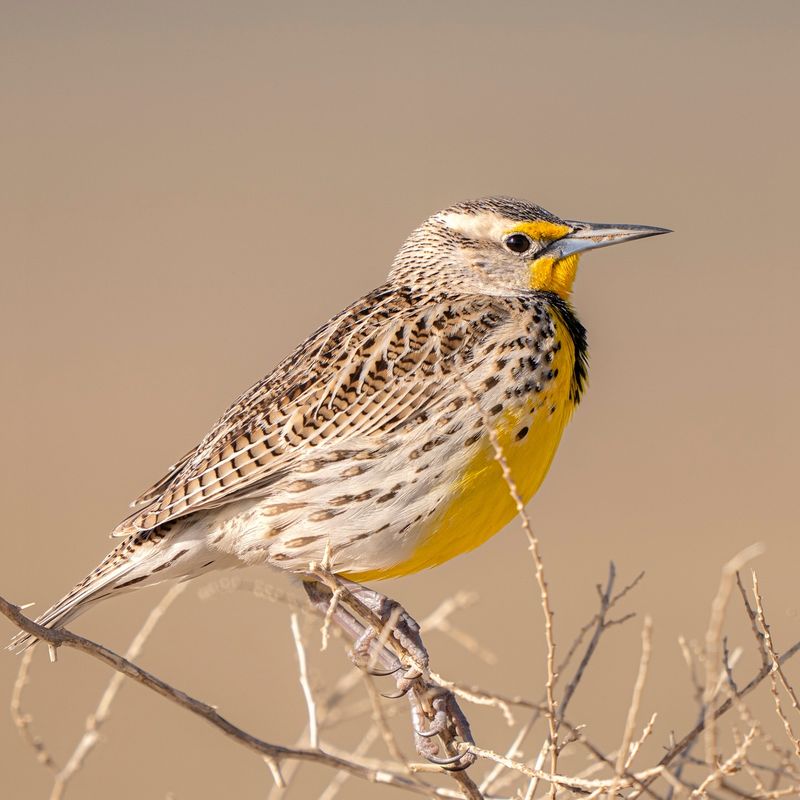
Across the open prairies, the Western Meadowlark makes its presence known with a song that sounds like it was poured from a golden flute. Its voice is a hallmark of the American plains, a melody that dances on the breeze.
The meadowlark’s song is both a territorial claim and a cheerful display, a testament to the bird’s vibrant life and surroundings. Its flutelike notes carry far, a serenade to the wide-open spaces it calls home.
With its bright yellow breast and distinct black V-shaped band, the Western Meadowlark is as visually striking as it is audibly captivating. Its song, a blend of joyous notes, reflects the beauty and freedom of its environment.
The meadowlark’s voice is an anthem of the prairies, a sound that embodies the spirit of the land.
12. Red-Winged Blackbird
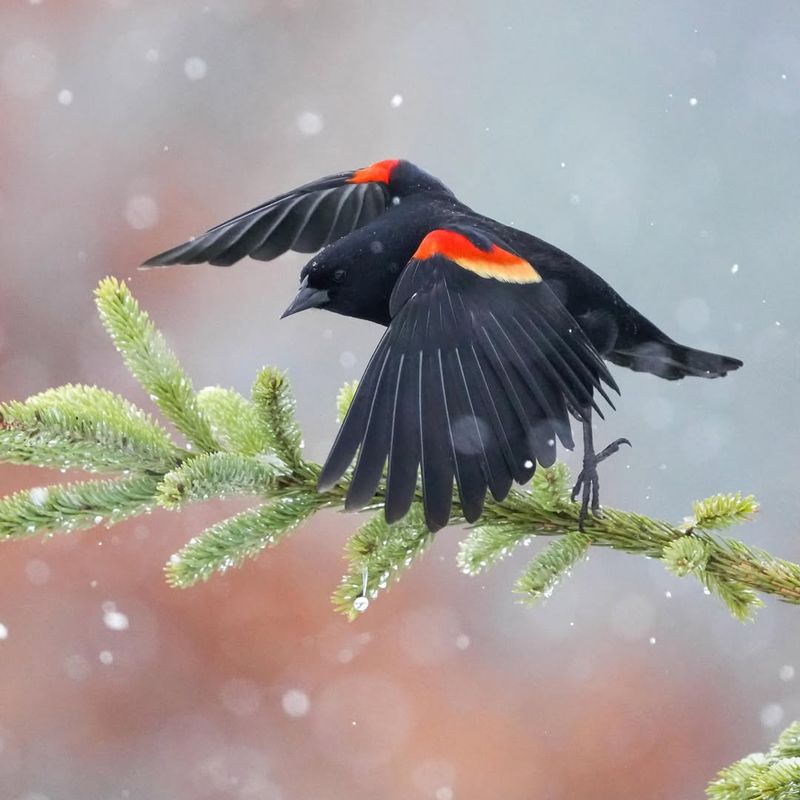
In the wetlands, the Red-winged Blackbird delivers its distinctive call, a sound that cuts through the air like a sharp whistle. Known for its bold presence, this bird’s song is as striking as its appearance.
The blackbird’s song, often described as a conk-la-ree, is a declaration of territory and an invitation to potential mates. Its voice resonates through the reeds, a lively addition to the wetland orchestra.
With shiny black feathers and bright red and yellow shoulder patches, the Red-winged Blackbird is a charismatic performer. Its song, clear and confident, is a reflection of its dominant nature. The blackbird’s call is more than a melody; it’s a statement, a testament to the wild vibrancy of its home.
13. Wood Thrush
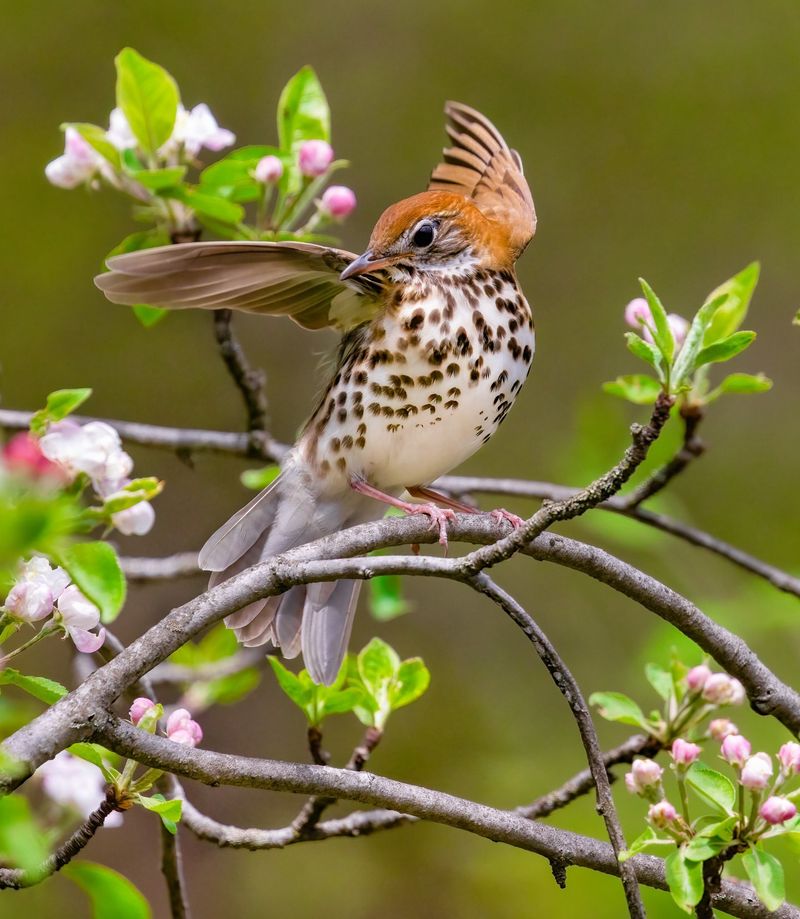
In the heart of the forest, the Wood Thrush’s song echoes like a flute’s melody, a sound that enchants all who listen. Known for its ethereal voice, this bird’s song is a fusion of clear notes and rhythmic patterns.
The thrush’s call is a celebration of the woodland environment, a sound that marks the changing seasons and the lush life of its habitat. Its song is both a communication tool and a work of art, a testament to the bird’s role in the forest.
With its rust-colored back and spotted breast, the Wood Thrush is as charming as its song. Its voice, a blend of clarity and harmony, is a reminder of the beauty and complexity of nature. The thrush’s melody is not just a sound; it’s an experience, a connection to the forest’s soul.
14. Rufous Hornero
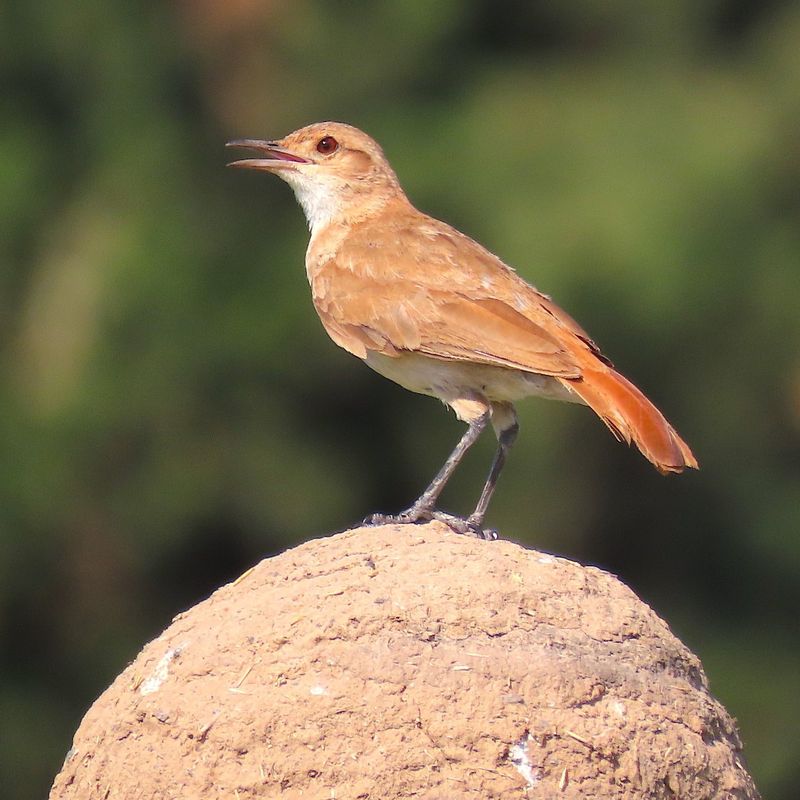
In the South American landscape, the Rufous Hornero’s call is a rhythmic anthem that accompanies its industrious nature. This bird, known for its distinctive mud nests, adds a lively soundtrack to its surroundings.
The hornero’s song is a series of rapid notes, a sound that reflects its dynamic life and bustling environment. Its call serves as both a territorial marker and a means of communication with its mate.
The Rufous Hornero, with its reddish-brown feathers and sturdy build, is often seen busily constructing its oven-shaped nest. Its song, energetic and repetitive, mirrors its industrious spirit and connection to the land.
The hornero’s call is more than just noise; it’s a testament to its role as a builder and a symbol of resilience.
15. Greater Prairie Chicken
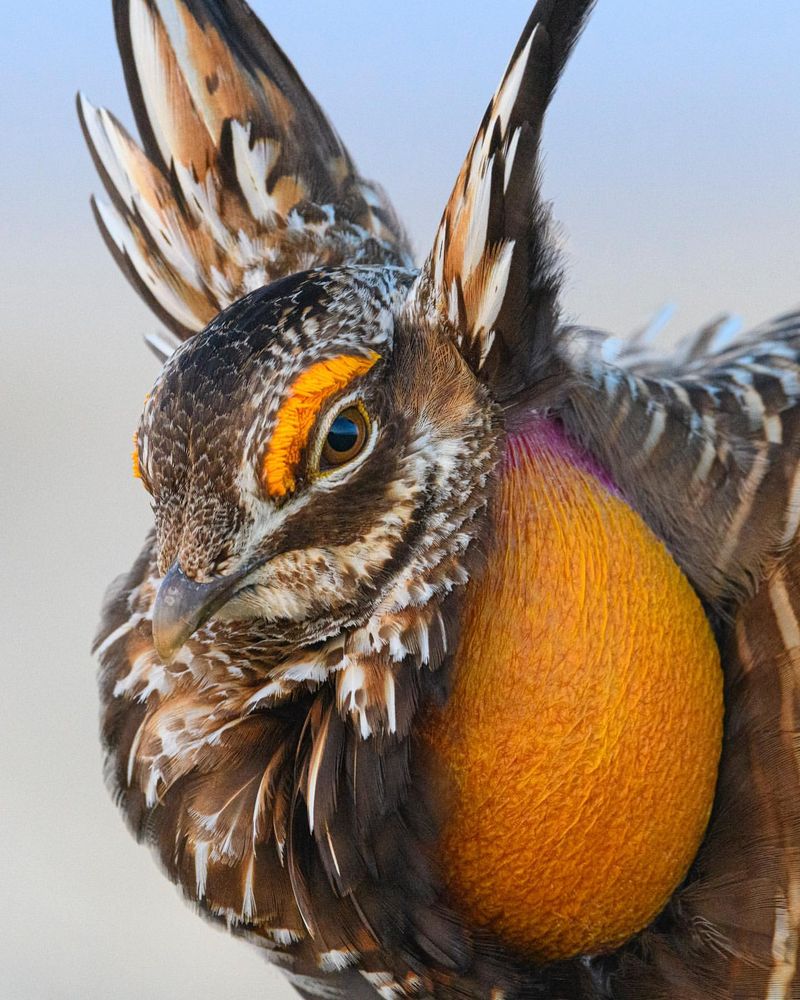
In the open grasslands, the Greater Prairie Chicken’s booming call is a distinctive feature of the spring mating ritual. This bird’s vocalization, accompanied by an elaborate dance, is a spectacle of sound and movement.
The prairie chicken’s call is a low, resonant boom that carries across the plains, a signal of both attraction and defiance. Its sound is an integral part of the lekking display, a communal dance that showcases the male’s prowess.
With its barred brown feathers and striking neck sacs, the Greater Prairie Chicken is as compelling to watch as it is to hear. Its booming call, coupled with its dance, is a celebration of life on the prairies, a timeless ritual that echoes the rhythms of nature.


